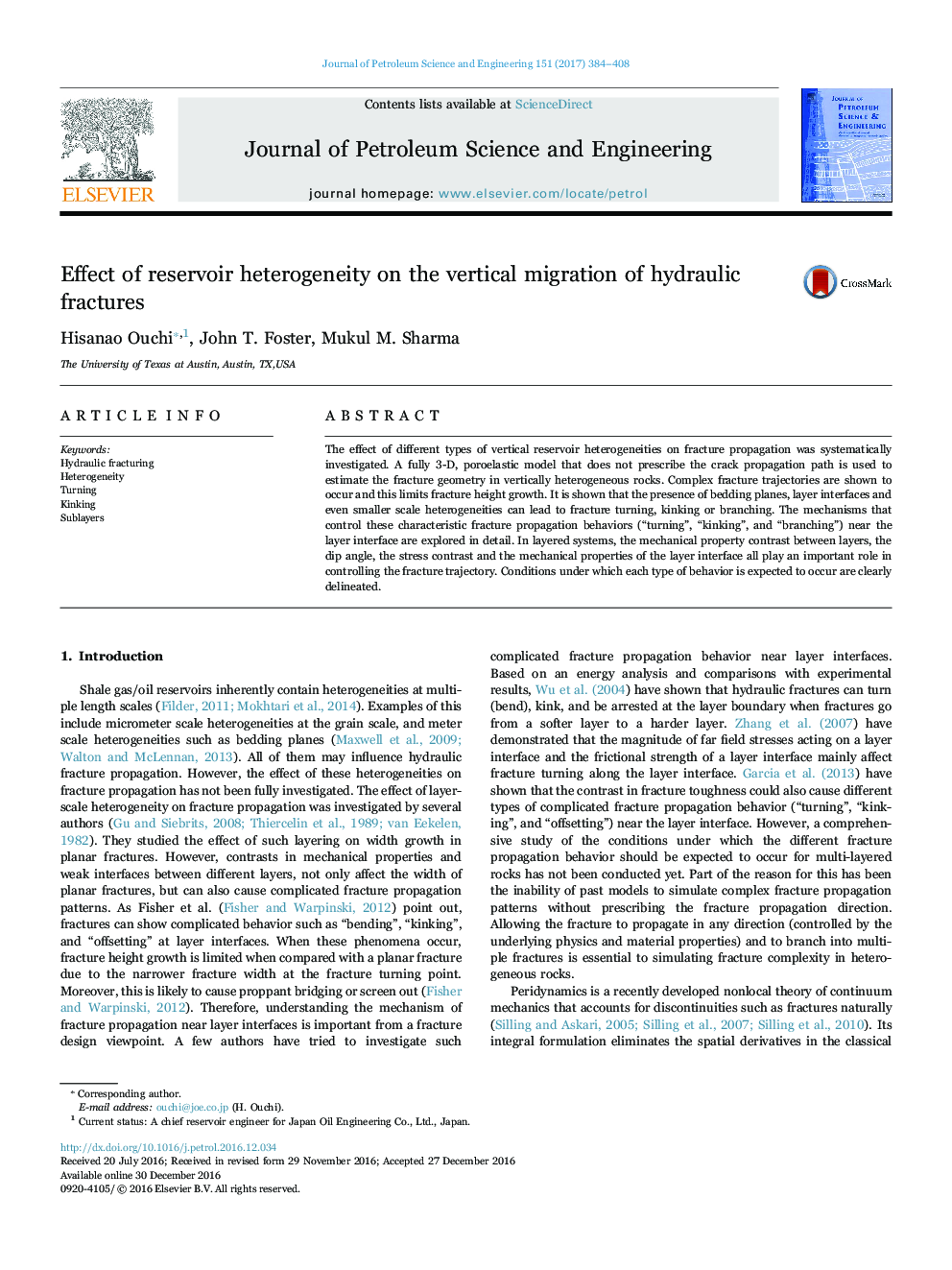| Article ID | Journal | Published Year | Pages | File Type |
|---|---|---|---|---|
| 5484391 | Journal of Petroleum Science and Engineering | 2017 | 25 Pages |
Abstract
The effect of different types of vertical reservoir heterogeneities on fracture propagation was systematically investigated. A fully 3-D, poroelastic model that does not prescribe the crack propagation path is used to estimate the fracture geometry in vertically heterogeneous rocks. Complex fracture trajectories are shown to occur and this limits fracture height growth. It is shown that the presence of bedding planes, layer interfaces and even smaller scale heterogeneities can lead to fracture turning, kinking or branching. The mechanisms that control these characteristic fracture propagation behaviors (“turning”, “kinking”, and “branching”) near the layer interface are explored in detail. In layered systems, the mechanical property contrast between layers, the dip angle, the stress contrast and the mechanical properties of the layer interface all play an important role in controlling the fracture trajectory. Conditions under which each type of behavior is expected to occur are clearly delineated.
Related Topics
Physical Sciences and Engineering
Earth and Planetary Sciences
Economic Geology
Authors
Hisanao Ouchi, John T. Foster, Mukul M. Sharma,
